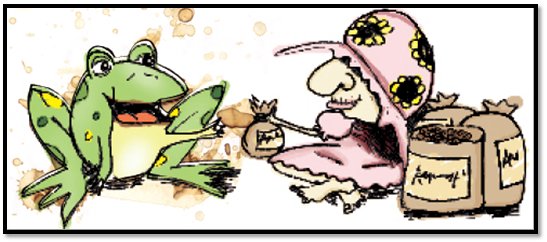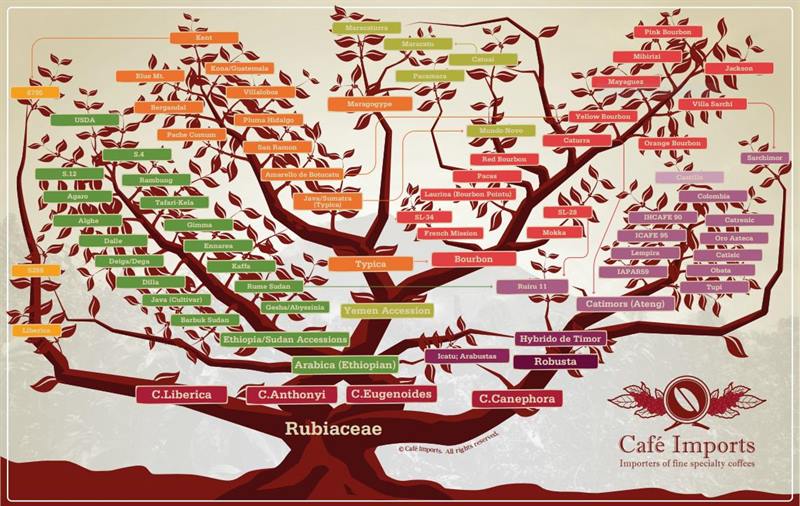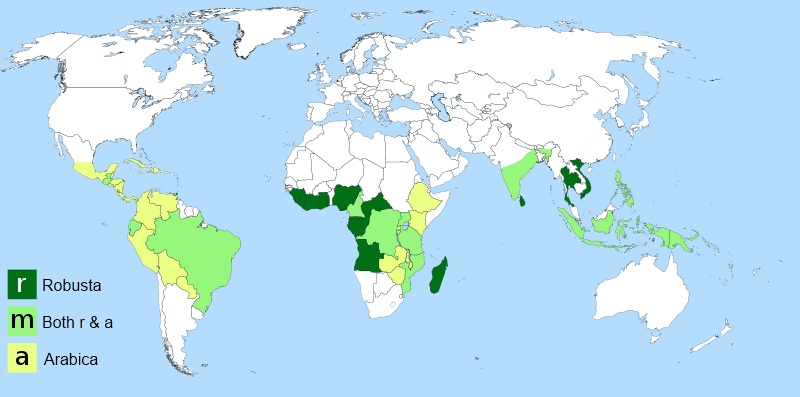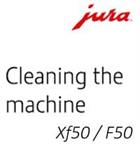What is the Arabica vs Robusta debate? We list the differences between the two best know varieties of coffee consumed by humanity.
Arabica – The King of Coffee Beans
Arabica or “Coffea Arabica” is a species of coffee indigenous to Ethiopia and Sudan, specifically it is accepted in the Kaffa forest region. Coffea Arabica is believed to be the first species of coffee to be consumed and then cultivated. For over 1,000 years it has been grown in southwest Arabia. It is considered to produce better coffee than the other major commercially grown coffee species,Coffea canephora (Robusta) and the lesser known or used Coffea Liberica (Liberica).
Arabica contains less caffeine than any other commercially cultivated species of coffee. Wild plants grow to between 7-12 m tall, and have an open branching system; the leaves are opposite, simple elliptic-ovate to oblong, 6-12 cm long and 4-8 cm broad, glossy dark green. The blossoms (flowers) are produced in auxiliary clusters, each flower white, and 1-1.5 cm in diameter. The fruit is a berry 10-15 mm long, maturing bright red to purple (in most varieties, and also found in yellow and orange),containing two seeds (the coffee ‘bean’).
Arabica is considered better taste, but more expensive than Robusta. The Arabica trees grow in semi-tropical climates near the equator, both in the western and eastern hemispheres, at high altitudes. Because ripe pure Arabica cherries (un-roasted green beans) fall to the ground and spoil, they must be carefully monitored and picked at intervals, which increases production costs.
Man-made Derivatives
With coffee being so popular and Robusta being so bitter, there was a demand for an Arabica that could be easily cultivated, easily grown and would be more robust. Arabica beans were used as a source for this and Robusta qualities added. This resulted in a a range of coffees that are easier to cultivate. However it also had significantly higher amounts of caffeine. This was good for chasing away the insects in the areas the tree was cultivated (initially Brazil), however since caffeine is bitter, it affected the taste so these modified Arabica derivatives are better-tasting than Robusta and can be produced under simpler conditions than pure Arabica, but it tastes nowhere near as great.
Unfortunately most of the world’s acclaimed coffee brands rely on this man-made version to the Arabica bean. Brazil is by far the most prolific producer these hybrid.
Less Caffeine
Published findings in the journal Nature by Paulo Mazzafera, a researcher of Universidade Estadual de Campinas, found that Ethiopian Coffea Arabica (“heirloom” varities) naturally contain very little caffeine, While beans of normal Coffea Arabica plants contain 12 milligrams of caffeine per gram of dry mass, these “heirloom” variants contain only 0.76 milligrams of caffeine per gram with all the taste of normal coffee.
It should be noted that the are varieties of Arabica that are closer in relation to the Robusta. Robsuta is genetically Arabica’s great grand-father. Robusta genetics will increase the amount of caffeine. As would the man made mixed varieties.
Essentially this is the reason why Arabica is widely recognised as the king of coffee beans. Hence heirloom Arabica from Ethiopia is the king of kings of coffee beans.

Arabica vs Robusta
Robusta owes its popularity to the following:
- It is able to produce twice as much fruit per plant (also about at least twice as much caffeine)
- Robusta is easier to grow, cultivate and is more robust (pun is obvious) than Arabica
- Robusta bean has no real flavour unless it is dark roasted, thus making the roasting process easier, as this is essentially a cook until burnt philosophy
- Because of the above, in an effort to reap more profits from the consumers, the big four coffee producers rely heavily on Robusta when calming that a coffee is 100% coffee – it can be 100% Robusta, although typically it is 30%
- Note: there are some coffee drinkers that claim Robusta is required in a coffee blend, and there are even those that claim there are Robustas that are better than Arabicas. We at Quaffee are yet to be convinced.
Some Irony
Robusta is one of the parents of Arabica. the other is Eugenioides. In a freak of nature the chromosomes of both parents were carried across to the sibling. This is probably the reason why Arabica is so different. It is a true blend of both of its parents, not just some from the one and some from the other.
Comparisons
Some differences between Arabica and Robusta coffee.
| Item | Arabica | Robusta |
|---|---|---|
| Date species described | 1753 | 1895 |
| Chromosomes (2n) | 44 | 22 |
| Root system | deep | shallow |
| Time from flower to ripe cherry | 9 months | 10-11 months |
| Flowering | after rain | irregular |
| Ripe cherries | fall | stay |
| Yield (kg beans/ha) | 1500-3000 | 2300-4000 |
| Optimum temperature (yearly average) | 15-24° C | 24-30° C |
| Optimal rainfall | 1500-2000 mm | 2000-3000 mm |
| Growth optimum | above 1000 m | 0-700 m |
| Hemileia vastatrix | susceptible | resistant |
| Koleroga | susceptible | tolerant |
| Nematodes | susceptible | resistant |
| Tracheomycosis | resistant | susceptible |
| Coffee berry disease | susceptible | resistant |
| Caffeine content of beans | 0.4*-1.4% | 1.7-4.0% |
| Shape of bean | flat | oval |
| Typical brew characteristics | acidity | bitterness, full |
| body | average 1.2% | average 2.0% |
*The lowest amounts are Arabica heirloom
Major Varieties
Arabica Coffee – Coffea Arabica
Coffea Arabica was first described by Linnaeus in 1753. There are a number of sub-varieties from which there are many different strains and cultivars have been developed. Such as Caturra (Brazil, Colombia), Mundo Novo (Brazil), Tico (Central America), the dwarf San Ramon and the Jamaican Blue Mountain.
The average Arabica plant is a large bush with dark-green oval leaves. It is genetically different from other coffee species, having four sets of chromosomes rather than two. The fruits are oval and mature in 7 to 9 months; they usually contain two flat seeds (the coffee beans) – when only one bean develops it is called a pea-berry.
Arabica coffee is often susceptible to attack by pests and diseases (being lower in caffeine), therefore resistance is a major goal of plant breeding programmes. Arabica coffee is grown in Central and East Africa, throughout Latin America, in India and to some extent in Indonesia.
Quaffee only uses Arabica in their coffee since we prefer the taste.
Robusta coffee – Coffea Canephora
Originally found the the forests of Congo. The term “Robusta” is actually the name of a widely-grown variety of this species. It is a robust shrub or small tree growing up to 10 metres in height. Its a shallow root system means it is well suited to growing on a flatter surface. The fruits are rounded and take up to 11 months to mature. The seeds are oval in shape and smaller than those of Coffea Arabica.
Robusta coffee is grown in Indonesia, Vietnam, throughout South-East Asia West and Central Africa, and where it is known as Conillon. Vietnam is the largest producer of Robusta with Brazil the second largest.
Liberica Coffee – Coffea Liberica
Originally found in Liberia. Liberica coffee grows as a large strong tree, up to 18 metres in height, with large leathery leaves. The fruits and seeds (beans) are also large.
Liberica coffee is grown in Malaysia and in West Africa, but only very small quantities are traded as demand for its flavour characteristics is low.
Has been cross pollinated with Arabica to produce variants.Around 1% of the worlds coffee production is Liberica.
The coffee family tree
There are believed to be over 7,000 varieties of coffee. Café Imports has put together a family tree of the most common coffees that are used in coffees that are roasted and drunk. We paste a copy below:

We have posted this documents for you, and it can be opened here: Café Import’s Coffee Family Tree 2013 07 23
Sources
The sources of the material above can be found at the following websites:
- International Coffee Organization – www.ico.org
- Wikipedia – en.wikipedia.org/wiki/Arabica
- Café Imports – www.cafeimports.com





Hello: I copyrighted the title “Arabica ~VS~ Robusta: No Contest in 2002, https://ineedcoffee.com/arabica-vs-robusta-no-contest/
We have removed that title from this post that original appeared on our old site, this was merely copied across when we pored.